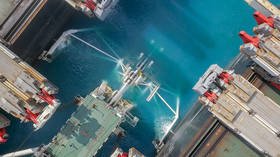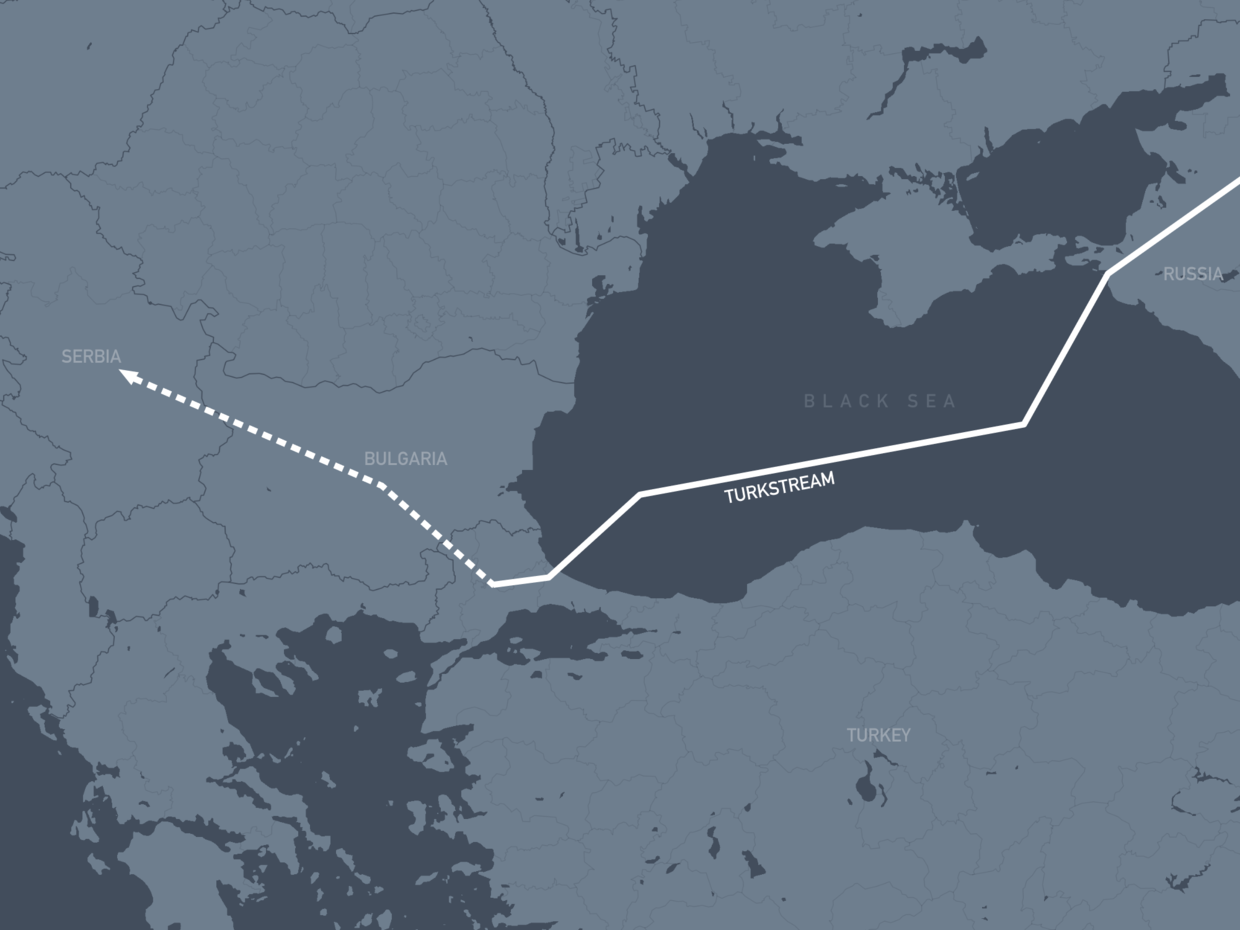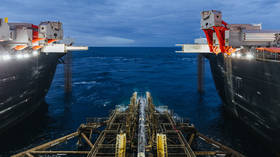Full stream ahead: Russia & Turkey launch TurkStream gas pipeline
Russian President Vladimir Putin and his Turkish counterpart Recep Tayyip Erdogan have launched the long-anticipated offshore pipeline TurkStream, that will deliver Russian gas to Turkey and further to southern European states.
The 930 km pipeline across the bottom of the Black Sea became operational on Wednesday, with the two leaders attending a special opening ceremony. Serbia’s President Aleksandar Vucic and Bulgarian Prime Minister Boyko Borissovalso participated in the event, as the leaders symbolically launched the project from the stage.
"The supply of Russian gas through TurkStream will undoubtedly be of great importance not only for the economy of Turkey and the Black Sea region, but will also have a positive impact on the development of many South European countries, and will contribute to improving the energy security of Europe in general,” Putin said. He also thanked his Turkish counterpart for the “political will” that was necessary to implement such a massive initiative.

As Russia remains the main gas supplier for Turkey, the countries will implement new joint energy projects, Turkish President Recep Tayyip Erdogan vowed on Wednesday. Russia is also involved in another massive energy project in Turkey, Akkuyu nuclear power plant (NPP), which is set to become operational later this year.
Also on rt.com Turkey vows to retaliate if US imposes sanctions on Russian gas pipelineIn his remarks at the inauguration ceremony, Russian Energy Minister Alexander Novak said that the launch of one of “largest construction projects in modern history” marks a “historic day” for the world energy development as a whole.
TurkStream is the “Silk road of the energy world” and a big step forward for Turkey, as well as a cornerstone of the relations between the two nations, Turkish Energy Minister Fatih Donmez told the audience.
The TurkStream natural gas pipeline was created as an alternative to the South Stream pipeline after Bulgaria ditched the project in 2014, under pressure from the US. The two-string TurkStream boasts the total capacity of 31.5 billion cubic meters, with one line supplying Turkey and the other transferring the blue fuel to southern and southeastern Europe.

In a last-ditch effort to stop Russia’s energy projects, US President Donald Trump signed into law the massive National Defense Authorization Act in late December. According to the document, companies involved in the construction of both TurkStream as Nord Stream 2 could face US penalties unless they quit the Russian projects.
However, unlike Nord Stream 2, the offshore section of the TurkStream had been already completed by that time. Ankara has also vowed to retaliate against any US sanctions.
Some EU states are separately building their sections of the pipeline to get the gas supplies from Russia. In late December, Bulgaria announced its readiness to receive natural gas from Russia’s Gazprom via Turkey. The new route is more economically viable for the country and could make gas cheaper for its consumers by around 5 percent, according to the country's Energy Minister Temenuzhka Petkova.
Serbia is also looking forward to getting Russian gas supplies and has already completed its section of the pipeline. But the country is not directly linked to the pipe, and will have to wait until neighboring Bulgaria extends TurkStream to its border. Russian President Vladimir Putin earlier accused Sofia of deliberately delaying the construction of its section, warning that Moscow can find ways to bypass its territory, if necessary.
“This pipeline will allow Serbia to get gas at decent prices, better than we’ve had been so far,” Serbian President Vucic said on Wednesday, as cited by the local media. He noted that the project would allow Serbia to attract more investment and develop industrial production.
Serbia’s northern neighbor Hungary also wants to use the TurkStream natural gas pipeline to diversify national energy supplies. Budapest hopes that Sofia and Belgrade will finish their legs of the project in time, allowing it to get the first Russian gas supplies in 2021.
For more stories on economy & finance visit RT's business section













